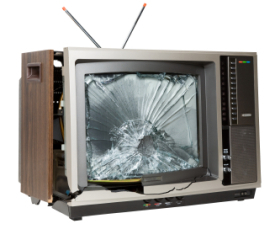Is Programmatic Video About to Replace the TV Ad?
by on 29th Apr 2015 in News

Ben Plomion, Chango*, VP, marketing, assesses the prospect of programmatic video ads unseating linear TV spots as marketers' tool of choice when it comes to engaging relevant audiences en masse.
Video is a powerful marketing tool, with its ability to tell a brand’s story through a triad of sight, sound and motion, unrivalled for its visual prowess by no other format bar TV.
Although unlike linear TV advertising, performance is entirely trackable and it offers up a perfect platform to target people with ads in real-time. So it comes as no surprise that programmatic video is gathering pace as a hard hitting form of advertising: according to an eMarketer report in 2014, advertisers and publishers spent a massive $700m on programmatic video and by the end of 2015 that figure is expected to triple.
So why is programmatic video becoming so popular? For the same reasons programmatic works for many other channels. One of the biggest lures of programmatic advertising is that it’s highly efficient; so instead of sending a barrage of the same ads without knowing who's viewed them, we can deliver ads that are right for that individual.
Combining the two, programmatic and video gives you the opportunity to zone in on the most suitable consumers and increases the chances of a product purchase, or increased brand engagement. In other words, by combining the emotional bonds created by video ads (think Volkswagen and the Darth Vader child, see below) with the benefits of gaining greater audience insights that come with programmatic targeting, there is a lot to be gained. It’s particularly effective with consumers who don’t watch programmes via a TV anymore (of which there are many), opting instead for the convenience of anytime/anywhere digital channels like Verizon’s TV-on-demand and YouTube.
Programmatic video ads work well for brands because they are targeted and highly relevant to the viewer, but also because they are interactive. For example a consumer could watch a video ad online, click through for a coupon, view the shampoo properties, or other brand related content, right there and then.
An added bonus is that you can measure how often users respond to your ads and use garnered insights to better tailor them to that individual’s response patterns. This is where programmatic video ads create an extra layer of brand engagement which TV ads don’t yet provide.
So, with its clear benefits, are we about to see programmatic video replace the mighty TV ad? Not quite yet, there are a few more hurdles that need to be overcome first.
First and foremost, marketers face a shortage of quality video inventory within open ad exchanges. As the name denotes, open exchanges allow almost anyone in, but with that comes a variation in the calibre of buyers within the network.
To overcome this, many publishers tend to sell their inventory directly to agencies and brands, or through private marketplaces (PMPs) as they are typically limited to just a handful of buyers. With a shortage of quality inventory in the open ad exchanges, advertising vendors, like Chango, are tapping into additional sources, such as those PMPs.
Nevertheless, this isn’t to say open exchange inventory is useless – a lot of it is great in fact.
So how do you tell the good from the bad? Advertisers tend to rely on a combination of video-specific metrics, such as viewability, how much of a video was watched, and the amount of completed videos.
Again, this isn’t always a fool-proof technique. Brands need to distinguish between click-to-play and auto-play ad formats, and consider that while auto-play views will naturally drive completed views, that isn’t the same as capturing a consumer’s attention. In other words, the metrics used should be determined by the campaign, and should effectively reflect the goals the advertiser wants to achieve.
And then we have viewability. Viewability is a good metric for programmatic video campaigns (why pay for an ad that a consumer has no chance of seeing?), but what does that actually buy you? The Media Rating Council definition of the metric requires that 50% of the ad creative must be in view for just one second.
However is that really going to satisfy marketers? As an industry we need to align our thinking around a common standard for viewability. Fortunately, organisations like the Internet Advertising Bureau are leading the debate for developing this.
Of course, click-through rate in programmatic video has its share of potholes too. Accidental clicks are common, occurring as consumers attempt to close an ad and miss that tiny little X. Plus with video, advertisers need to measure not just the volume of clicks they receive, but the quality. This might involve strategies like looking at site analytics, bounce rates, and subsequent user engagements (such as clicks on the store-locator tab on a landing-page).
So with its fair share of caveats, programmatic video won’t be replacing linear TV advertising for the time being. While programmatic TV remains at the very early stages, programmatic video ads are already leading the way. Used as part of a multichannel strategy it can deliver great performance, and pack a lot of story-telling in a matter of seconds (as Budweiser’s Lost Dog Super Bowl ad made clear).*Chango were purchased by Rubicon Project recently in a deal reportedly worth in excess of $100m. Click here to read an assessment of the purchase by Ciaran O'Kane, ExchangeWire, CEO.
Ad VerificationAdvertiserCross-ChannelDigital MarketingDisplayMeasurementMedia SpendPerformancePMPProgrammaticTargetingTradingTransparencyTVVideoViewability









Follow ExchangeWire